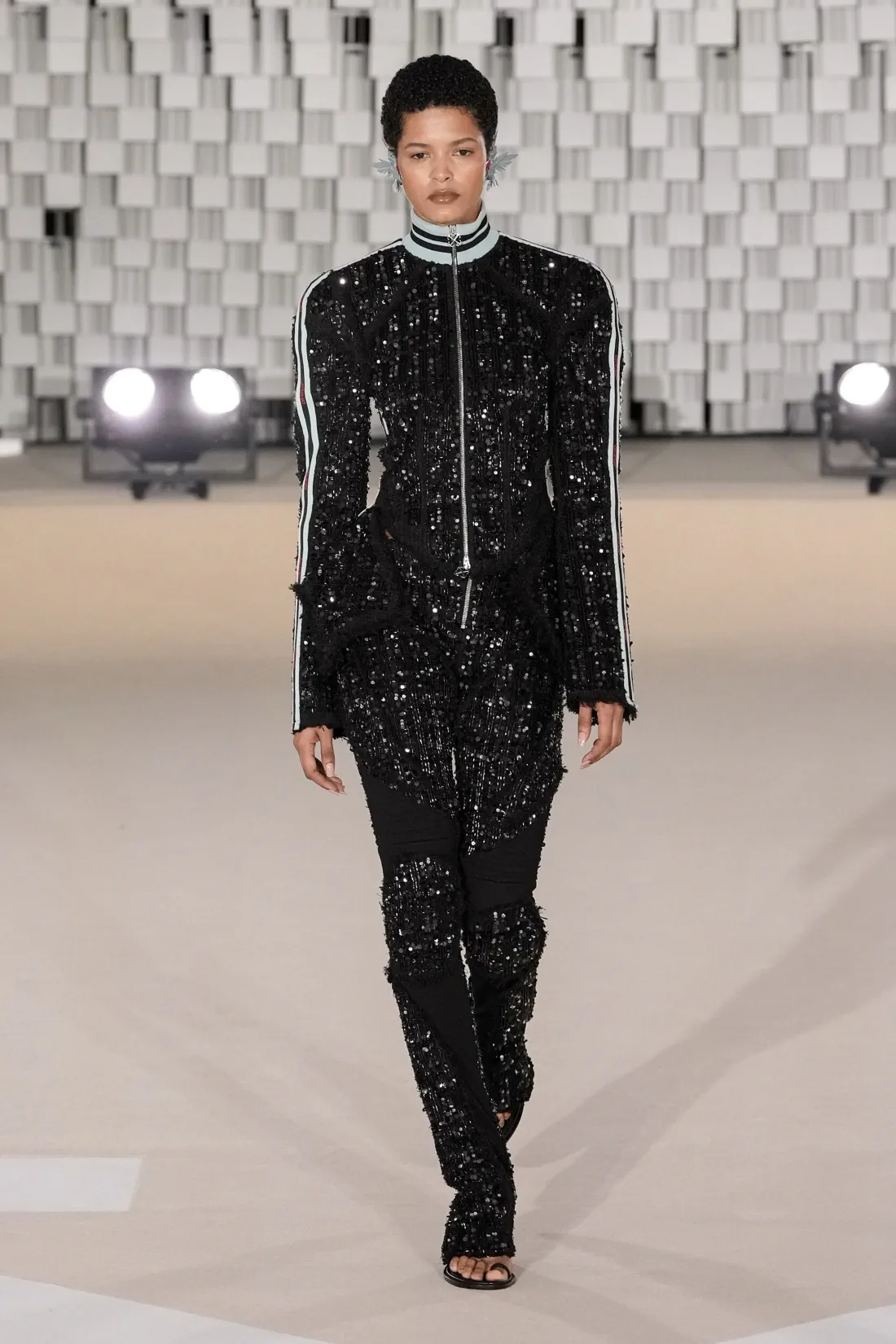Under gray Parisian skies, Off-White‘s Fall/Winter 2025 collection transformed utilitarian clothing into armor for modern resilience. Creative director Ib Kamara, in his third show since Virgil Abloh’s death, redefined uniforms as symbols of collective strength rather than conformity. The show’s title, “State of Resistance,” echoed Abloh’s legacy of elevating marginalized voices while anchoring itself in Kamara’s cross-cultural lens-born in Sierra Leone, shaped by London, and attuned to global youth movements.
Kamara’s line fused American sportswear DNA with West African political motifs. Varsity jackets featured oversized shoulders and “OO” initials, nodding to Abloh’s Midwestern roots, while Ghana’s national emblem-a star and an eagle-appeared on tailored coats and sheath dresses. These symbols acted as quiet provocations, challenging narrow interpretations of heritage. Scuba-inspired bodysuits featured deep thigh slits, a subtle homage to Abloh’s disruptive approach to proportion.

Each piece prioritized function without sacrificing boldness. Parkas and shorts came with utility straps; boots hid side pockets for “emergency supplies,” modeled by Nigerian musician Burna Boy. The new Sand Bag accessory revived Off-White’s hazard stripes, now framing a modular clutch. Kamara’s memories of school uniforms resurfaced in pleated skirts and crisp shirts, reworked with asymmetrical panels that suggested armor in motion.
Backstage, Kamara emphasized the role of clothing as a social equalizer. “We all wear jerseys. We all wear denim,” he noted, referring to the collection’s distressed jeans and ribbed-knit second skins. Ivory bouclé jackets softened militaristic silhouettes, while a cobalt-blue eagle-embroidered coat bridged ceremonial grandeur and everyday wearability. This duality reflected his vision for Off-White: a global tribe that finds power in shared aesthetics rather than divisive borders.
While avoiding direct political statements, Kamara embedded resistance in details-a star embroidered on a tie, storage compartments that resembled protest gear. His designs eschewed nostalgia, instead channeling Abloh’s belief in fashion as a catalyst for dialogue. The result felt less like a tribute and more like a blueprint for how heirs to influential houses can honor origins while writing new futures.
©Photo: Off-White



















































